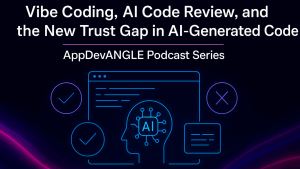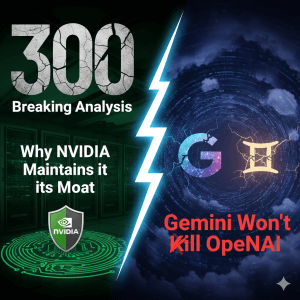🧠 Summary:
IBM is proving that enterprise-grade AI doesn’t have to be large or expensive—it just needs to be purpose-built. At IBM’s recent keynote, CEO Arvind Krishna reaffirmed theCUBE Research’s 2023 prediction: small, domain-specific language models will dominate the next wave of generative AI adoption.
This aligns directly with our Gen AI Power Law, which forecasts a long tail of AI model deployment across cloud, on-prem, and edge environments—driven by where the data lives, not how big the model is.
📌 Key Insight: IBM Confirms the Long Tail of AI
In 2023, we published a Breaking Analysis titled “The Gen AI Power Law”, where we identified a shift away from massive, general-purpose LLMs toward smaller, more accurate, domain-specific models. IBM’s 2025 strategy is now in full alignment with this trend.
In his keynote, Krishna stated:
“Smaller models are now more accurate than larger models. They’re faster, cheaper, and you can run them anywhere—cloud, on-prem, or at the edge.”
🔄 Power Law in Action: IBM’s 2025 Strategy
| theCUBE Prediction (2023) | IBM Execution (2025) |
| Small LLMs will dominate due to specificity and efficiency | IBM Granite models: 3B–20B parameters, open-source, enterprise-tuned |
| AI will move to where the data lives (cloud, edge, on-prem) | HashiCorp acquisition + Watsonx.data lakehouse + OpenShift hybrid cloud |
| RAG will be key to domain-specific AI | WatsonX data intelligence + integration with Datastax vector search |
| ROI-focused adoption curves | IBM internal cost savings: $3.5B+ via AI/automation (Client Zero) |
💡 Why It Matters
- IBM’s AI strategy is an industry validator of the emerging small model paradigm.
- Granite family models deliver 30x cost advantages vs. massive models.
- IBM’s enterprise-only focus sidesteps the consumer hype and goes deep on integration, security, and business outcomes.
- Their approach to multi-agent orchestration and “build-your-own-agent-in-5-mins” tools is paving the way for mass enterprise productivity gains.
🔍 theCUBE Research Take
We believe IBM has finally cracked the enterprise AI formula:
- Smaller models trained on enterprise-grade data
- Open architectures that preserve sovereignty
- AI-native integration with hybrid cloud infrastructure
- Real ROI from internal deployments and customer case studies
This isn’t just “catching up”—it’s a validation of our long-tail AI hypothesis and a signal that the enterprise AI wars will be won by those who build for specificity, speed, and control.
🔮 What to Watch
- Will IBM’s open-source Granite models see mass third-party adoption?
- Can WatsonX become the “Red Hat of Gen AI” for enterprises?
- Will other cloud providers accelerate hybrid AI offerings in response?
- How will vector search and RAG frameworks like Datastax reshape model performance?
📣 Conclusion
IBM’s 2025 keynote was more than a product update—it was a declaration that AI’s future is not about building the biggest model, but the right one.The age of enterprise AI is here—and it’s smaller, faster, open, and ROI-driven. TheCUBE Research sees this as the beginning of a major market realignment, one that favors vendors who bring AI to the data, wherever it lives.


